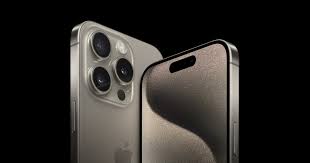
Finally, Apple has stated that Rich Communication Services (RCS) will be available on iPhone models starting in 2024. After much anticipation, iPhone users will now be able to take advantage of improved messaging features like read receipts, group chats, high-quality media sharing, and more.
Rich Communication Services, or RCS, is one of the features that Android users have been enjoying for a while. More sophisticated messaging features like group conversations, read receipts, stickers, and media sharing are made possible by this protocol. But Apple has shown little interest in implementing RCS for its iOS devices, preferring to concentrate on its own iMessage service.
The antiquated and constrained SMS and MMS protocols are to be replaced with the new messaging standard, RCS. RCS provides a more dynamic and interesting means of communication with enterprises, friends, and family. End-to-end encryption, which guarantees the confidentiality and security of the messages, is also supported by RCS.
Android devices have embraced RCS in large part because Google has been advocating for its use since 2016. Additionally, Google created Google Messages, a messaging program that, when available, defaults to RCS as the protocol. As of October 2021, Google Messages had been downloaded over one billion times through the Google Play Store, according to Statista.
Apple hasn’t indicated that it would embrace RCS on its products, though. Rather, Apple uses iMessage, a proprietary texting service available only to iOS and macOS users. Many of the capabilities that RCS provides are also available in iMessage, including group chats, read receipts, typing indicators, high-quality media sharing, stickers, emoticons, and much more. Additionally, iMessage offers end-to-end encryption, which limits message reading to the sender and recipient alone—Apple or other third parties are not allowed to access the messages.
There could be several reasons why Apple took so long to adopt RCS.
Apple desires to keep its advantage over Android smartphones in the marketplace. One of the key factors in the decision of many consumers to purchase an iPhone or Mac is iMessage, which makes it possible for them to converse easily with other Apple users. Because Apple users have access to capabilities that Android users do not, iMessage also fosters a sense of exclusivity and allegiance among Apple users. Apple would lose some of its advantages over Android smartphones if it supported RCS, since RCS would allow cross-platform communication with comparable features.
Apple wishes to maintain its reputation for privacy. Apple has made a point of presenting itself as an advocate for customer security and privacy, particularly when compared to companies like Google and Facebook that utilize user data for advertising. Apple has implemented many steps, including iCloud Private Relay, Privacy Labels, App Tracking Transparency, and more, to improve customer security and privacy.
Apple’s support for RCS would force it to rely on carriers or other outside parties to manage the communications, potentially jeopardizing user security and privacy. While end-to-end encryption is supported by RCS, it is not currently required or widely used. For legal or regulatory reasons, some carriers or regions might not be able to deploy it, or they could need access to customer data.
Apple aims to stay away from complicated and difficult technical issues. In order to support RCS, Apple would need to integrate its devices with many carriers and locations, each of which might have its own RCS implementations and standards. Apple may face technological difficulties and complications as a result, including compatibility, performance, and reliability problems. In addition, Apple might have to handle any legal or regulatory repercussions from enabling RCS in various areas. For instance, the usage of encryption or specific RCS features may be prohibited or restricted in various nations.
Apple wishes to hold out for a superior substitute. RCS is still a nascent and developing standard, thus it could not satisfy all of Apple’s demands. For instance, RCS does not enable advanced features like Animoji, Emoji, Tap back reactions, Message effects, and so on that are supported by iMessage. Moreover, RCS does not enable smooth interaction with other Apple apps or services, including FaceTime, Wallet, Siri, etc. Apple might decide to hold out for a superior substitute that can provide more advantages over RCS.
Following years of rumors and pressure from the public and business community, Apple finally made its announcement. Apple has resisted implementing RCS in favor of concentrating on its own iMessage service, which has comparable functionality but is limited to inter-Apple device use. But as more and more Android smartphones come equipped with RCS compatibility, Apple has seen fit to jump on the bandwagon and provide a cross-platform texting experience.
In the first quarter of 2024, Apple plans to release a software update that will enable RCS capability for iPhone users. The primary RCS client for Android smartphones, the Google Chat app, will also work with the update. This implies that users of iPhones and Android devices would be able to communicate with each other over RCS without the need for extra settings or apps.
What sets RCS apart from SMS, and what are the reasons behind Apple’s reluctance to adopt RCS?
The antiquated and constrained SMS and MMS protocols are to be replaced with the new text messaging standard, RCS. The most popular method of delivering text messages is SMS, or short message service, yet it has a number of drawbacks, including:
Each message can only contain 160 characters. Group conversations, read receipts, typing indicators, and other features found in many well-known messaging programs are not supported. Sharing of high-quality media, including documents, audio, video, and photo files, is not supported. Because it does not provide end-to-end encryption, third parties or the carriers may be able to access the communications.
The Multimedia Messaging Service, or MMS, is an addition to SMS that enables the exchange of media assets, such movies or images, but it also has a number of restrictions, including:
It is limited to sending messages of up to 300 KB. Group conversations, read receipts, typing indicators, and other features found in many well-known messaging programs are not supported. Sharing of high-quality media, including documents, audio, video, and photo files, is not supported. Because it does not provide end-to-end encryption, third parties or the carriers may be able to access the communications.
Well-known messaging apps offer a variety of features, many of which are also available in RCS.
A message can have an infinite number of characters. It can read receipts, type indicators, have group chats, and do a lot more. High-quality media sharing is supported, including the exchange of documents, stickers, emojis, audio, video, and photo files. Because of its support for end-to-end encryption, neither the sender nor the recipient, nor any other parties, can read the communications.
Both customers and the communications sector will be pleased to hear that Apple has decided to support RCS. In addition to increasing consumer convenience and enjoyment, it will increase market innovation and competition. In the near future, RCS is anticipated to become the de facto messaging standard, and Apple’s involvement will hasten its adoption and advancement.
